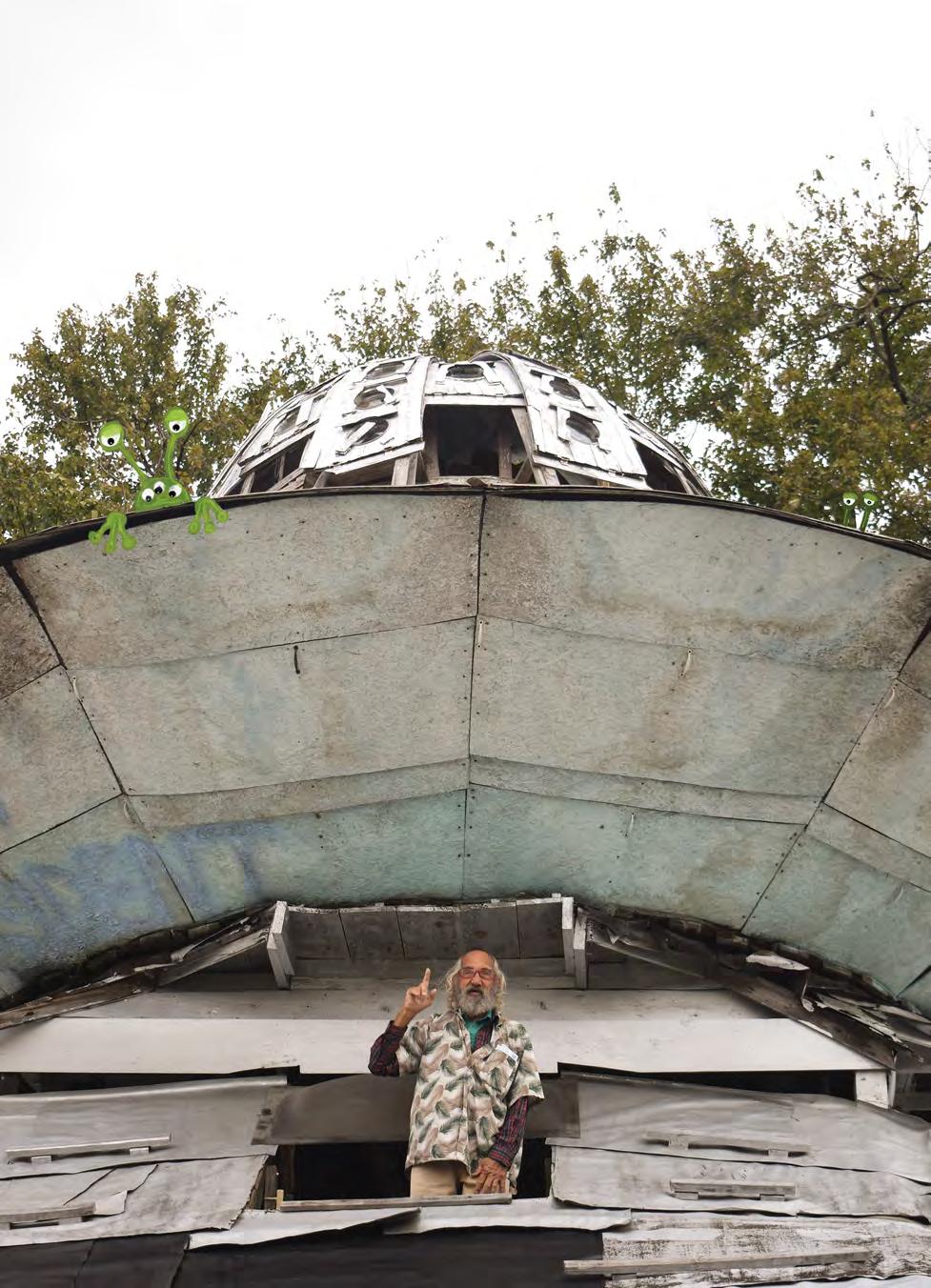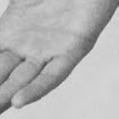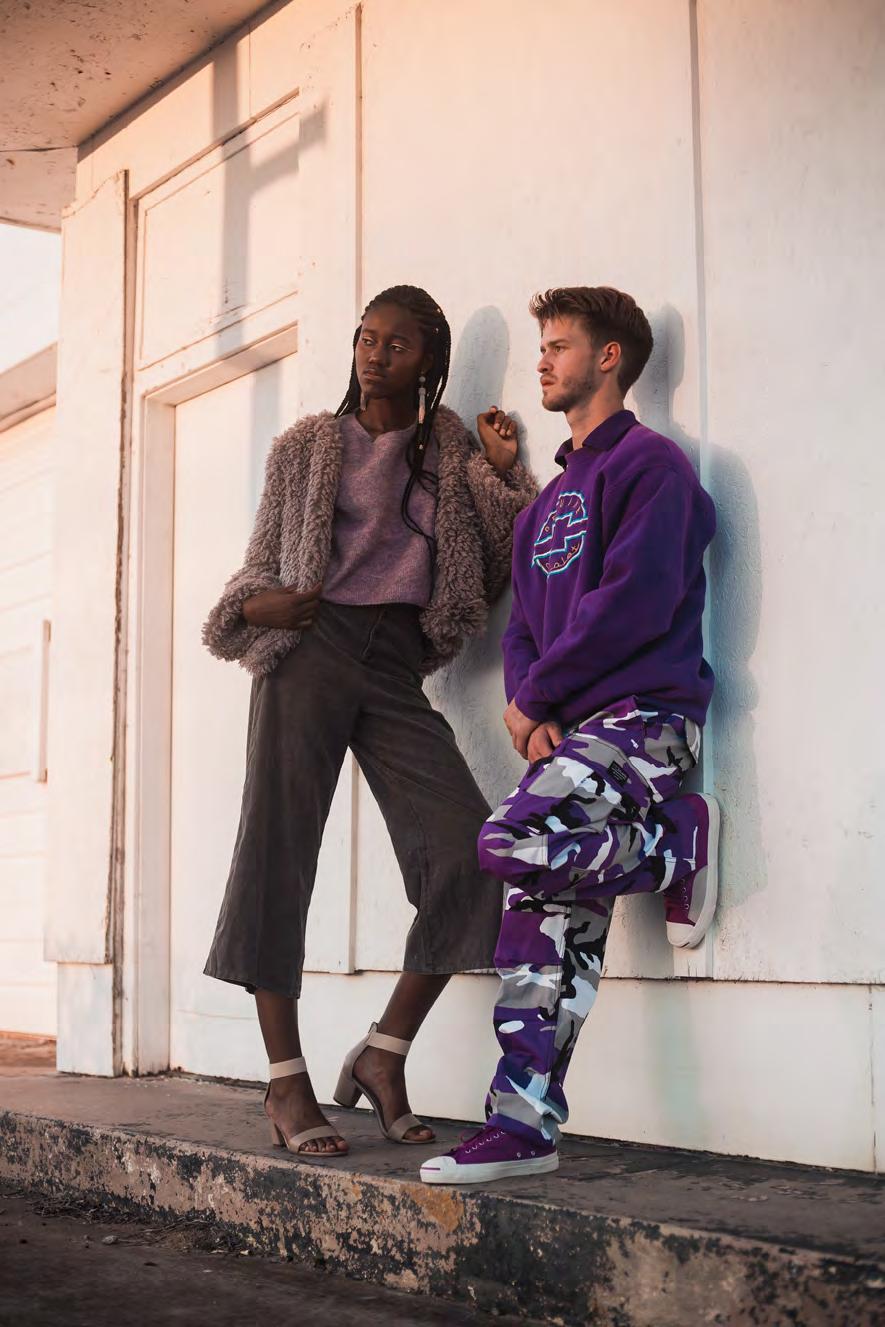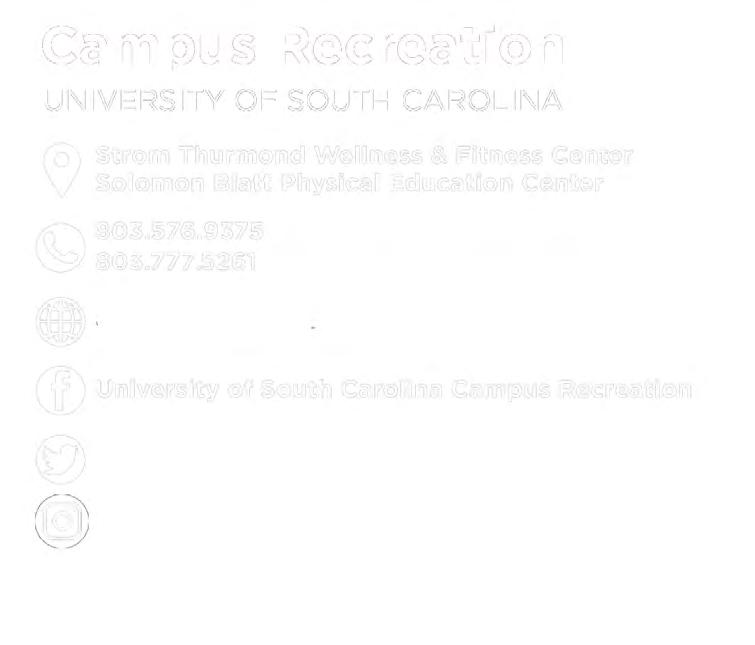FIELDS OF GREEN
REDEFINING CANNABIS SATIVA

THE MAN. THE MYTH. THE BAGUETTE. HOW FRENCH DRINKING TICKET CAPTIVATED US ALL
AMERICAN NEON FRIED FOOD AND FLUORESCENT LIGHTS AT THE STATE FAIR


REDEFINING CANNABIS SATIVA

THE MAN. THE MYTH. THE BAGUETTE. HOW FRENCH DRINKING TICKET CAPTIVATED US ALL
AMERICAN NEON FRIED FOOD AND FLUORESCENT LIGHTS AT THE STATE FAIR

STUDENT MAGAZINE OF THE UNIVERSITY OF SOUTH CAROLINA
EDITOR-IN-CHIEF
CREATIVE DIRECTOR MANAGING EDITOR
PRINT ARTICLES EDITOR Jenna Schiferl
ONLINE ARTICLES EDITOR Zoe Nicholson
STAFF WRITER Courtney Carrick
STAFF WRITER Mary-Bryant Charles
STAFF WRITER Hallie Hayes
STAFF WRITER Nicole Kitchens
STAFF WRITER Almeera Lateef
STAFF WRITER Sarah Nichols
STAFF WRITER Rose Steptoe
COPY CHIEF Maura Forsyth
ART DIRECTOR Gracie Newton
STAFF DESIGNER Meredith Price
STAFF DESIGNER Emily Schoonover
STAFF DESIGNER Katie Slack
PHOTO EDITOR Alyssa-Leigh Willey
ASSISTANT PHOTO EDITOR Coleman Rojahn
STAFF PHOTOGRAPHER Calandrea Hatcher
STAFF PHOTOGRAPHER Mason Haselden
STAFF PHOTOGRAPHER Mark Maddaloni
STAFF PHOTOGRAPHER Anna Schoeck
STAFF PHOTOGRAPHER Camila Trujillo
STYLE EDITOR Caroline Hart
ASSISTANT STYLE EDITOR Jasmine White
PUBLIC RELATIONS DIRECTOR Abby Bickel
MULTIMEDIA DIRECTOR Steven Tapia
ASSISTANT WEB EDITOR Chandni Amin
SOCIAL MEDIA COORDINATOR Frazier Bostic
CAROLINE FAIREY GRACE STEPTOE
CHRISTIAN COMPTON
DIRECTOR OF STUDENT MEDIA
Sarah Scarborough
CREATIVE DIRECTOR
Edgar Santana
ADVERTISING MANAGER
Patrick DiDomenico
SOCIAL MEDIA MANAGER
Sydney Patterson
FACULTY ADVISOR
Scott Farrand
CREATIVE SERVICES
Calista Berner
Emily Schoonover
Meagan Sigmon
Grace Steptoe
ADVERTISING REPRESENTATIVES
Tommy Aiken
Cal Dean
Evan Johnston
Torey Powers
Advertising: (803) 777-3018
To contact G&B, email sagandbe@mailbox.sc.edu or visit www.gandbmagazine.com Garnet & Black magazine is produced four times a year by students of the University of South Carolina and is distributed free to members of the university community. All editors and staff members can be contacted at (803) 777-1149. The office is located in Russell House room 339. Email letters to the editor to sagandbe@mailbox.sc.edu or to Garnet & Black magazine, Student Media, 1400 Greene Street, Columbia, SC 29208. Letters should be 250-400 words and must include name, address, phone number and academic information (if applicable). Garnet & Black reserves the right to edit for libel, style and space. Anonymous letters will not be published.






Unfortunately, it’s a valid question. Only 24 years after this magazine emerged as the union between the school yearbook and the literary magazine, the zeitgeist of publishing has changed beyond what any student in 1994 could have imagined.
As the student leaders of Garnet Media Group grapple with new methods of multimedia storytelling, student engagement, and social media outreach, the unsettling question lurks at the back of all of our minds – storytelling and reporting will always be important, yes, but why print at all?
For me, the answer lies between science and sentimentality. Multiple studies, in light of growing digital textbook sales, show that students retain information better when they can visualize it spatially on the page. In other words, our stories are less likely to be another scrolled-past link once they’re solidified in ink. But personally, I think Jonny Sun, an illustrator, author, and Twitter persona said it best when he convinced Lin-Manuel Miranda to turn his tweets into a book with this – “People like having something they can hold.”
Having the evidence of these stories’ and these students’ presence on this campus – physical, weighted, solid in the hand – seems like reason enough. People delete Tweets, posts, even sometimes entire social media accounts, and stories get lost in the algorithms. Here, you have a collection of researched, drafted and green-lighted articles written, photographed and designed by students that you can take with you beyond your years at USC.
As gratifying as it is for us on staff to open the door to the office and see boxes piled five feet high, or to crack open the magazine for the first time and inhale fresh ink, these magazines aren’t just meant to sit on racks. The first editor-in-chief of Garnet & Black hoped that this magazine would find its way onto the desks, coffee tables, and backs of toilets of USC students. That hope hasn’t changed in the years we’ve been printing – except now, it’s extended to your phone screens and laptops, too. In conjunction with our print magazine, we produce online-only content – columns, style shoots, photo galleries, opinion pieces and much more.
Let us know how we can better serve the Carolina community by reaching out to us via email or DM. However you read Garnet & Black, we’re glad you’re a part of our story.
 BY ROSE STEPTOE • PHOTOS BY ALYSSA-LEIGH WILLEY • DESIGN BY KATIE SLACK
BY ROSE STEPTOE • PHOTOS BY ALYSSA-LEIGH WILLEY • DESIGN BY KATIE SLACK
“INTERSTELLAR,” “THE MARTIAN,” “STAR TREK,” “STAR WARS,” “GUARDIANS OF THE GALAXY,” “FIREFLY,” “APOLLO 13,” “ALIEN,” “2001: A SPACE ODYSSEY” – THE LIST GOES ON AND ON. We have injected our fascination with space so deeply into our media that one doesn’t even blink an eye at a movie with an out-of-this-world setting anymore. And why would we not want to explore this fascination with space? Our interactions with the final frontier have been going on for over 50 years, and yet they only continue to evolve in more exciting ways as private space travel and the possibility of water on Mars fill the headlines. Space is far-reaching in our zeitgeist just as we ourselves aim to reach far beyond our stratosphere. Our imagined ventures into space are often full of hope and curiosity, or at least fun-filled adventure. On the other hand, plots where outsiders come to Earth often venture into horror. If the cultural mind of the United States is so inclined to imagine going to space, then why hasn’t there been a more recent and positive fascination with others coming to Earth?
Murmurs about aliens and Area 51 have fallen to the wayside in popular culture, living on outdated forum boards under the auspices of conspiracies rather than finding their way onto the silver screen or streaming on our TVs. However, for at least one South Carolinian, there is hope that others out there may have developed an interest in Earth, just as we have developed an interest in space. Although you might not see anything like it in the movies anytime soon, a material manifestation of hope for alien presence on Earth exists here in South Carolina.

When driving down I-26 South, perhaps on a road trip from Columbia to Charleston, you may stop to fill up your tank at an unassuming exit indicating it leads to “Bowman.” A typical middle-of-nowhere pit stop, there doesn’t appear to be much at the exit except for one gas station, with the rest of the area just a combination of forest and farms. Leaving the gas station, however, a small, unassuming cardboard sign on the side of the road might catch your eye, reading “UFO — 5 miles,” as an arrow points rightward down the road. Following the sign will lead you down curving roads, past farms and into a small town with not much except for an aging gas station and, to its right, what appears to be a giant, wooden, trash-laden fort.
The sagging fort is actually an approximately 40-foot-wide, wooden flying saucer, with planks spray-painted with messages surrounding the dilapidated outpost. This is the UFO Welcome Center. The structure, erected by Jody Pendarvis in the 1990s in what is actually his backyard, mostly consists of an array of 2-by4s and ladders. In front of the precarious fort is a wooden plank sign donning a black spraypaint scrawl: “UFO Welcome Center, Bowman, Planet Earth.” A friendly fishnet alien waves from beside the sign, toeing the line between a little cute and a little creepy. As you get closer to the entrance of the saucer, a silver missile balanced atop cinder blocks again welcomes visitors to the center, while another wooden sign warns: “Space people only. Enter at your own risk.”

Beyond the structure, which may or may not be able to support your weight, the entire area has the sweet and acrid smell of stagnant water, bringing with it the looming threat of mosquitoes in the summer months. If you decide to venture inside the structure, you will find that the inside of the round, high-ceilinged shack is filled with rusty tools, ladders and a gray tube TV circa the early 2000s. You can even climb to the top of the UFO Welcome Center and peak out of an opening that faces road – if you dare.
Despite its foreboding nature, the UFO Welcome Center’s quirkiness evokes a nostalgia for “X-Files,” or at least just for simpler times when we could less easily disprove conspiracies and UFO sightings. The friendly alien waving from the outer fence of the center seems to be welcoming its fellow space people to the quiet town of Bowman. While earnest in its effort in to welcome UFOs and aliens – Pendarvis built the center after a UFO sighting – the UFO Welcome Center speaks to the need for some escapism every now and then. As a roadside attraction for many, the welcome center implicates us all as “space people.” We may not be from out of this world, but we are from outside the world of Bowman, and in a sense, aliens visiting from our own towns.
By inviting a little piece of a far-off galaxy to the rural South, the center alludes to a greater purpose: Maybe we could use some outside visitors to learn about a greater world, and similarly, outsiders could learn a little something from us. Whether that means space people and earthlings interacting, or just us earthlings visiting new places and meeting new people, the possibility that the center has a greater meaning beyond its status as a roadside attraction is something that I want to believe.

























































































































 BY SARAH NICHOLS • PHOTOS BY MARK MADDALONI & ANNA SCHOECK • DESIGN BY EMILY SCHOONOVER
BY SARAH NICHOLS • PHOTOS BY MARK MADDALONI & ANNA SCHOECK • DESIGN BY EMILY SCHOONOVER



















Twenty years into the future, this article will likely make little sense to anybody who happens to pick it up in an old stack of magazines. Right now, however, I’m willing to bet that any University of South Carolina student on Twitter is familiar with “DrinkingTicket,” the popular Twitter account, garnering almost 80,000 followers, that is – self-proclaimed – South Carolina's “info authority.”
And I’m willing to bet that of those students who know of DrinkingTicket, most of them are also familiar with “French Drinking Ticket,” a parody account that tweets in a French accent and critiques the ethics of the former account. It wears a beret, loves baguettes and likes to “hon hon hon.”
But French Drinking Ticket has become more than just an accented parody account – it has become a vehicle in holding people in power accountable. It has become a critique of our university's underage drinking culture. How did we get here?
During the days preceding Hurricane Florence, Regan Freeman, a pre-law political science student, was bothered that many students in his classes announced that school would be cancelled the following day well before University of South Carolina put out any such statement. It turns out they got their information from a tweet by DrinkingTicket.
Hours passed until Freeman heard anything from Carolina Alert. Later in the afternoon, the university issued a statement that said classes would be cancelled effective 1 p.m. the following day. DrinkingTicket had to delete their previous, inaccurate statement and issue a new one.
This bothered Freeman, and had been bothering him for some time. DrinkingTicket gets its information from a variety of sources, some of them student tips, and it is not uncommon for some of that information to be false – or at least not the whole story. This can lead to misinformation spread on Twitter in the Columbia community.
Alex Waelde is the creator and operator of the DrinkingTicket account. Waelde, a 2015 South Carolina graduate, started the account when he was a student. Along with DrinkingTicket, the 28-year-old is also the marketing director at Cover 3 Bar and The Five Points Saloon, the CEO of Viral College Entertainment, an employee at NAI Avant and an administrator for the Memorial and Fraternity Lots, used for tailgating university football games.
“This is kind of how Alex Waelde lives, inside this weird microcosm of information,” Freeman said of the multiple hats Waelde wears.





So Freeman, annoyed at the misinformation, tweeted a meme from his personal account to DrinkingTicket, and got blocked. After discussing with a few of his friends, who shared his sentiment, they decided on a whim to make a French Drinking Ticket account, parodying the original in the style of the French Elon Musk Twitter account that gained fame earlier this past summer.
His first tweet was “I tweet ze informacion..... I get ze information wrong Honhonhonhonhonhon,” followed by, “I sip ze wine and sell ze codes for ze frat lotz.... honhonhonhonhonhonhonhonhon.”




























French Drinking Ticket drew followers quickly. Freeman estimates that the account gained about 2,500 followers within the first week of joining. The account is currently at almost 6,000.

“It’s funny, and I think it’s such an accessible satire because it’s very easy to understand, because that satirical French person is funny,” said Freeman. “You’re able in that ability to just talk in an accent to just kind of speak truth to power, if you will.”
And had Waelde not threatened legal action on Freeman for the account, it’s possible that French Drinking Ticket would have fizzled out quietly within a few weeks. But when Waelde threatened a lawsuit and to get Freeman suspended from school, fans on Twitter rallied behind him.
“So I figured, 15 of my friends are going to laugh at it, and we’re going to move on by two weeks ago. But apparently people really, really stuck with what was going on,” Freeman said. “And I don’t want to believe my tweets were that good, I just think that there was a sort of common known thing about how DrinkingTicket exists, and I think it was a very interesting way to sort of bring attention to that base hypocrisy.”

Instead, it took about a week for Waelde to discover French Drinking Ticket and the account’s owner, and reach out to him through mutual acquaintances. Waelde reached out to friends of Freeman’s in search of his contact information with the intent to ask Freeman to take the account down before he proceeds with legal action and lawsuits for targeted harassment and defamation of character. He said his lawyers were ready to go with the lawsuit, and that he found information about Freeman through his private investigator. He threatened reporting Freeman to student conduct and requesting suspension from school.
Freeman got word of this before being contacted by Waelde. He decided to take to Twitter about the issue.
“He has not reached out to me yet, he was going to try to wait until tomorrow but I figure I would beat him to the punch. Regardless of what happens, he’s attempting to silence dissent and very funny satire and come






















after my future. That’s cowardly,” Freeman wrote in a tweet. “He’s just mad that USC students and citizens of Columbia agree, DrinkingTicket is bad for the University. It doesn’t verify information, it gets things wrong, it exists to help 18 year olds avoid SLED and drink illegally. He’s mad somebody is calling him on this.”
Freeman also publicly identified himself as the creator of French Drinking Ticket. When he shared all of this on Twitter, a large outcry of support came for the account with the hashtag #IStandWithBaguette.
“I, for one, appreciate that @FrenchTicket doesn’t see news on another website, tweet it 6 hours later and slap a BREAKING tag in front of it,” tweeted Avery Wilks, SC Statehouse Reporter at The State.
Many USC students also showed their support.
“This incident created a completely deserved PR disaster for DrinkingTicket (even though the account is probably too popular to face permanent damage),” said fourth-year political science student Alex Boyd. “Satire is a legitimate form of criticism, no matter how silly it is, and it’s wrong for powerful actors like DrinkingTicket to try to silence that.”
And feelings for DrinkingTicket are often conflicted.
“I think it could be helpful if it wasn’t used for its intended purpose. Tweeting about DUI checkpoints encourages drunk driving and overall irresponsibility,” said second-year public relations student Abigail Braun. “However, since it does have a large Columbia and student following, it is helpful when it tweets about road closures and crimes in the area. It’s a great way to spread news quickly to a large audience.”
Freeman contacted the Office of Student Conduct as well as attorneys he knows personally the next day to get their advice, and they all said the same thing: Waelde has no grounds to sue or expel you for the creation of a parody account.
And in the wake of all of the drama, the jokes and the arguing, the Carolina community is left with a large, looming problem. Freeman was certainly not the
first to challenge it, but he was able to shed light on it in a new way, and one that was accessible and translatable to fellow USC students.
“Basically, if you try to silence somebody, it’s going to make the voice even louder, and I think this happened here,” Freeman said. “Here I am, a dumb, dumb, dumb kid. I’m the first one in a long time to push back on DrinkingTicket successfully, which is profound. Which is so profound. Because, again, this was not going to be a crusade. This was never going to be a crusade.”
DrinkingTicket has stated multiple times on Twitter that they discourage drinking and driving and that they instead only encourage safe drinking practices. Nonetheless, the DrinkingTicket account has frequently tweeted about DUI checkpoints and undercover cops in the past.
“So you have this endemic problem going down in Five Points, right? And here we have what is effectively the social media head of all of this – you know what I’m saying? – who brings the attention to these bars,” Freeman said. “And so to challenge that, in such a dumb way, has been very interesting.”
Underage drinking, or drinking and driving, won’t become hobbies of the past just because of a few tweets in a French accent. However, French Drinking Ticket did become a powerful account in our University of South Carolina bubble of what it looks like to stand up to something that you find problematic, instead of letting yourself sit in that silence. While people may be communicating in memes and appropriated French accents, if that’s what it takes to open a dialogue about the toxic drinking culture interwoven in our universities, then vive la résistance.
Alex Waelde declined to comment and his attorneys were reached out to, but did not respond.
HONHONHONHONHONHONHONHONHONHONHONHONHONHONHONHON

Cannabis sativa. Two controversial words that carry a heavy connotation. Enter: industrial hemp, a misunderstood plant often quickly associated with its psychedelic look-alike, marijuana.
In 2018, the South Carolina Department of Agriculture launched the Industrial Hemp Pilot Program. Twenty farmers were granted permits to grow up to 20 acres of industrial hemp – the first time the plant has been legally grown in the state since World War II.
David Bulick was one of the 20 farmers selected.
“A lot of people don’t know you can’t get high from it. They just see weed. ... I could give you a 20-pound bag and rolling papers, and you couldn’t get high,” Bulick said.
Cannabis is a plant family that consists of two main strains: indica and sativa. Hemp is of the sativa variety. Cannabis contains different chemical compounds, known as cannabinoids, that affect the body in different ways. Two major cannabinoids found in cannabis are THC and CBD. THC has psychoactive properties that can get users high – marijuana usually has a THC
concentration of 10 to 15 percent, while industrial hemp has a THC concentration no higher than 0.3 percent.
Some strains of industrial hemp have high percentages of CBD, which makes it a popular choice for medical use. Other strains are cultivated and used to make textiles, concrete, rope, clothes, food and plastic.
Derek Underwood, assistant commissioner for consumer protection at the S.C. Agriculture Department, said even some of the faculty within the department were unsure about hemp production in the state.
“We had to change the culture of the language here because we were all very skeptical about hemp,” Underwood said. “The number one thing we had to do before we started doing the education was that everybody had to get on the same page about what this was called: Industrial hemp.”
There are distinct differences in the chemical makeup separating marijuana and hemp, as well as obvious differences in physical appearance. Marijuana plants usually are shorter and fatter than hemp plants and




“Everybody had to get on the same page about what this was called: Industrial hemp.”
have lots of broad leaves. Industrial hemp is taller and skinnier, with few leaves at the base of the plant. Despite these differences, there have been multiple thefts from hemp fields in South Carolina, presumably by people that have mistaken the plant for marijuana.
“One of the farmers, they don’t go there by themselves anymore because if you have somebody that’ll go in broad daylight and pull up five or six of your plants, there’s no telling what they’ll do,” Underwood said. “Even with big signs up: ‘This is not marijuana. This is industrial hemp. There is no THC.’ But they see it and steal it.”
Bulick hasn’t experienced any theft from his property, but the nature of the industry presents new obstacles and challenges each day.
“No matter what the challenge is you just gotta find the resolve and you move onto the next ones,” Bulick said. “Everything that we do. It’s not a problem, it’s a challenge. We work through challenges and life is just that way.”
Farmers were responsible for researching all aspects of the industrial hemp growing process – everything from different planting methods to types of seeds. For Bulick and many other farmers, this resulted in a lot of trial and error.
After Bulick received his hemp permit in January, he traveled around the country to collect 175,000 hemp seeds.
For one such journey, he flew into Portland, rented a car, and drove an hour and a half into the woods with $40,000 cash. He eventually arrived at a 100,000 square foot industrial hemp farm. He met growers and selected the seeds and the strains he wanted while employees put them in vacuum sealed bags.
As he traveled back to South Carolina, these vacuum sealed bags of hemp seeds were nestled in Bulick’s luggage. Since hemp is still classified as a controlled substance, and each state’s laws are different, Bulick researched each state’s hemp regulations, printed out the legislation, and placed the documents in his luggage next to the seeds.
Bulick never encountered any problems transporting hemp seeds, but a few other farmers weren’t as lucky. Underwood said that some South Carolina hemp farmers had their seeds confiscated at post offices.
In late September, Bulick and his team harvested 41,000 hemp plants from two super greenhouses in Awendaw, South Carolina. He is also the owner of Charleston Hemp Company, which produces a range of CBD products like oils, disposable vaping pens, salves and lip balms. By mid to late November, Bulick plans to have a new line with over 70 CBD products implemented, including everything from bug spray and massage oil to edible gummies and bath bombs.
Bulick is also one of only two industrial hemp processors in South Carolina. According to Vanessa Elsalah, agriculture outreach specialist and industrial hemp coordinator, Bulick stepped up and became a processor after there was an obvious need in the state. The hemp used to create Charleston Hemp Company’s products are processed at Bulick’s site in Ridgeville, meaning that the products are “seed to shelf local.”
The farm bill mandates that all industrial hemp production is coupled with a research component. Five universities statewide partnered with the 20 hemp pilot farmers. According to Elsalah, the research component serves as a way to further explore the potential uses of hemp.
“We wanted to prove that this crop could be used for many, many different things –not just CBD oil, hemp oil or fiber,” Elsalah said.
Underwood emphasized the importance of hemp research while the program is in its infancy – noting that according to some sources, each acre of hemp can cost thousands of dollars to produce. Currently, there are no pesticides approved for hemp farming, meaning that most of the hemp produced in the state is done so organically. This makes the plant more susceptible to insect infestations that could destroy a field.

In addition to conducting industrial hemp research, Bulick has partnered with the Medical University of South Carolina to launch an accredited college course that teaches students the hemp growing process. The program should be implemented in time for the spring 2019 semester. He sees this teaching facility as a way to further educate communities about hemp and its uses, and by starting with college students, he hopes that the information will eventually make more people comfortable with the idea of hemp.
Bulick foresees a future South Carolina at the forefront of the CBD product industry, where people from across the country could travel to the state to learn the process.
In October, the state agriculture department announced the second round of selected hemp growers – this time, the list now includes 40 growers who are allocated 40 acres each. Underwood hopes by the third year of the program, it will eventually expand to allow for unlimited growers with unlimited acreage.
Despite the misconceptions surrounding hemp, the industrial hemp pilot program has the potential to redefine hemp as a medical and industrial tool – and it’s the pioneer hemp farmers that are making it happen.

For them, there is no set of standards. There is no guidebook.
“Every day is a freaking circus. It’s great,” Bulick said. “That’s life.”





 BY MARY-BRYANT
BY MARY-BRYANT
When his dog had grown too large to share a bed with him, Cameron Holbrooks saw only one option: He was going to need a bed big enough to hold them both. Instead of going online to scroll through stock at IKEA, he started sketching. He went to the store, bought some materials to match his design and built an entirely new frame from scratch. This brought about a new problem: The new bed was big enough to hold the dog, but the bedroom wasn’t big enough to hold the bed.

Dejected but determined to at least make something of the whole ordeal, he put the bed on Craigslist, where it sold in less than two hours for five times what it had cost to make it. Instead of pocketing the money, saving it for food or concert tickets or video games, he used it to buy more wood. This time, he made several tables that ended up garnering a profit of a couple thousand dollars. One thing was for sure: He could make something of this.
This was his junior year of high school. These days, Holbrooks is a full-time secondyear nursing student at USC, but he hasn’t stopped building furniture. In the years since high school, he has expanded his hobby into Holbrooks Designs, a furniture company that supplies clients from Charlotte to Atlanta with locally-sourced, hand-crafted dining tables, beds, and more. All of it comes straight from his workshop in Pendleton, South Carolina, where he makes every piece by himself – and by hand.
Figuring out the ins and outs of keeping a company afloat was another challenge Holbrooks had to confront alone. He grew up watching his father run a small business facing boat docks, but other than that he had no background in running a business.
“It’s a lot of guess and check,” Holbrooks says.
But as time went on, he taught himself how to network, market, and manage effectively. He stresses the importance of reinvesting when it comes to building a company. Most
of the profits he makes go right back into Holbrooks Designs, building his inventory so he’s never without high-quality materials to create more pieces.

Though he’s managed to turn it into a legitimate company, complete with t-shirts, ads and business cards, the foundation of the whole endeavor is firmly rooted in the creative side of things.
“I can’t draw at all,” Holbrooks says, “but I’ve always enjoyed art and creating things. The most rewarding thing is taking a blank canvas and adding all the right details.”
It’s something he stresses in his work, the details. When he starts a new project, he takes a long look over the wood he’s working with and makes note of all the knots and cracks, anything he can augment and manipulate to bring out the natural beauty in the material. It all culminates into pieces that walk a clever
line between the modern and the traditional, marrying the strong, angular look of welded metal legs with the warm, inviting tones of the wooden tabletops.
It’s a tough balance, maintaining the company along with staying on top of school work. There have been days when he’s been in the car at four in the morning to make a delivery to the upstate and back by ten for class. There was a time when he was taken advantage of by a furniture store who took several tables and instead of giving him his cut of the profits, skipped town without a word to anyone. He’s considered cutting the business altogether, but he hasn’t given up.
“Whether it be life, relationships, or a business, you’re going to face trials,” he says, “but if you stand behind your work and stay fully committed to your ideals, then you can weather any storm that comes your way.”
“Whether it be life, relationships or a business, you’re going to face trials,” he says, “but if you stand behind your work and stay fully committed to your ideals, then you can weather any storm that comes your way.”

 BY COURTNEY CARRICK • PHOTOS BY CAMILA TRUJILLO • DESIGN BY GRACIE NEWTON
BY COURTNEY CARRICK • PHOTOS BY CAMILA TRUJILLO • DESIGN BY GRACIE NEWTON
IT’S YOUR FIRST DAY ON CAMPUS AS A FRESHMAN. There’s the buzz of bustling students on Greene Street, the first adrenaline rush of making it to class just in time, and the genuine thrill of realizing you can eat Chick-fil-A six days a week if you wanted. The experience is surreal. Your entire life has been leading to this moment, when you finally spread your wings and fly.
The thing you don’t realize yet is that those wings don’t come with an operation manual.
That first year of college is often considered the most fun, yet the most challenging — resulting in the freshman dip: students who, despite receiving impressive grades throughout their high school career, experience a steep decline in their grades during their freshman year of college. For many, the shift from high grades to low grades can be alarming, scary and disheartening.
Scott McDonald, assistant director of peer learning at the Student Success Center, emphasizes that letting students know they are not alone in their experiences is instrumental to combating the freshman dip. Noting that, as documented by the Undergraduate Admissions Office, the student profile of an admitted freshman is quite impressive – a WCGPA of 4.12.
“We are bringing in high quality students, so this is the first time that some of them are going to experience ‘failure,’ however that might look for them,” McDonald said.
We know what the freshman dip looks like on paper. At first glance, it appears to be a numbers game, an issue with new students not knowing how to handle college classes and getting lower-than-expected
scores. However, it is important to address the underlying emotional, situational and environmental effects of the freshman dip.
For many students, like now-sophomore exercise student Jordan Capasso, the freshman dip came as an unwelcome surprise.
“I was always in Honors and had a solid 3.7 GPA throughout my entire high school career. I kept up those grades while playing basketball and soccer, not to mention while also working a job. It’s really easy to be excited for the social part of starting college, especially since that’s really the main thing you hear people talk about. I figured that since I did really well in high school I would just do well in college too,” said Capasso.
This belief is common, as many students during freshman orientation self-report they did not participate in most studying habits prior to college. The incoming students report they were able to simply pay attention in class to get good grades throughout high school. Since it’s human nature to inform current and future experiences by their past experiences, there is no reason most incoming freshman wouldn’t think exactly like Capasso did: If I did well academically in high school, then I will do well academically in college.
Skipping class because an instructor doesn’t take attendance, intimidating professors, 300-seat lecture halls and uninteresting subject matter can all prove to be a shock to a freshman’s system. Not to mention, many freshmen feel cornered into declaring a major before they really understand what it’s about.
Capasso names changing his major as the
driving force that got him out of the freshman dip. He worked closely with an exploratory advisor for several months before officially changing majors, and Capasso now looks forward to his classes. Not only can exploratory advisors inform students about other majors, they can provide other useful information. They can answer questions about potential careers, projected graduation dates or even resources offered by the Student Success Center.
It’s no surprise that freshmen, occupied with the excitement and newness of college itself, end up ignoring the importance of academics until midterms, when bad grades and homesickness hit simultaneously. McDonald says it is normally around this six week mark that freshmen begin to show up at the Student Success Center or make appointments with exploratory advisors in the academic advising department.
“Especially in that first year, we don’t see students right away in here, because
everyone has this idea of [they’ve] got it and they’re still riding that high of college being so fresh and new,” McDonald says.
As the newness of the environment fades and the reality of approaching adulthood settles in, freshman can find comfort in the services offered by the university. Since USC takes a holistic approach to countering the freshman dip, reaching out to one resource will lead to finding more – but it’s important to take that first step.

That step can be attending a peer-led session in the Student Success Center, making use of the 10 free counseling sessions from Student Health Services or meeting with an exploratory advisor. No matter what issue a student encounters, whether it’s academic or environmental, the faculty and staff of USC makes one message clear: On this campus, learning how to spread your wings and fly truly doesn’t come with a manual.
It comes with a university ready to help you write your own.
It’s no surprise that freshmen, occupied with the excitement and newness of college itself, end up ignoring the importance of academics until midterms, when both bad grades and homesickness hit simultaneously.
This seems to be difficult to do in these days of pinned down, heart-broken, unending grief.
When your heart is cracking beneath the pressure of his palm, and your eyes are shut so you can’t see the damage.
You don’t want to see what he can do to you. You don’t want that vision locked into your memory.
What is the point of speaking?
Where has your power gone?
Did you ever have any?
Take the time to write it down.
Journal it out in the therapy that will definitely follow. Write it in a tweet with a hashtag, Put his face on your Instagram feed.
Today he woke up, And he ate his cereal.
He went to the gym and scrolled through his timeline. He doesn’t follow you.
He goes to class and takes a nap afterwards. His girlfriend comes over, and they eat dinner together. You are nothing but misplaced memory to him, Another drunk story among the broken lamps and dumb phone calls.
And you do not want to be a victim here. You are too strong for that.
So you take the photo down. You force his existence from your mind, And you learn a song on the guitar. You eat cereal in the morning.
You put on your makeup in the bathroom. Your boyfriend drives you to class.
Stay warm, it is difficult to find a blanket around here. In times like this, we adapt.
We write down our convictions, and we dream our dreams through characters on screens, and we transfer our own agony into long winded, unread texts that shine in blue.
We are yelling things into a swimming pool. All anyone can see is your open mouth. All anyone can hear is a splash.
Sit on the bottom and have a tea party with yourself. It is here that you open your eyes.
The sting of the chlorine seems to burn him out, even just for a moment.
And you can see the body that you hope is still yours.
“You have games that are designed to be beautiful, designed to engage you. And when that’s available, why go outside? Why interact with people? Why do anything when you can just sit back and enjoy a world custom-tailored just to be a pleasant experience for you?”
Third-year psychology and education student Tim Kasper is a gamer. A member of on-campus gaming club, Gamecock E-sports, Kasper is amongst the everincreasing population of gamers at USC, a reflection of the rising popularity of video games.
This popularity also comes with more research on video game-related mental health issues: In June, the World Health Organization included gaming disorder in the International Classification of Disease. Like most other disorders on the Iist, gaming disorder is primarily defined by its interference in an individual’s daily life.

Kasper has witnessed just what sort of impact excessive gaming can have. For him, the affected individual was a close friend.
“He definitely fell really deeply into addiction,” Kasper said. “He became a top three [player] in this game he was playing. It was literally all he would do all day, every day, non-stop. It got so bad that his parents sent him to rehab.”
Kasper and his friend met in high school and quickly became close. For the following years, Kasper’s friend was always one of the more outgoing members of their social circle.
“The biggest tell most of us overlooked was how he was slowly withdrawing from people as a whole,” Kasper said.
While grinding long hours and devoting days to games is not an uncommon practice in the gaming community, doing so to such an extent is a rare occurrence.
“Some research says zero percent of the population, other research says 14 percent,” Professor Angela Nadeau, a licensed clinical professional counselor and current instructor at USC, said. Nadeau has over 20 years of combined clinical and teaching experience. “Most people agree it is one percent of the population – very small – that meet the criteria for [gaming disorder].”
And the gaming disorder that plagues that one percent of the population isn’t substance-based – it’s behavior-based. It’s not the games themselves, but the habits that are based around them.
“In gambling, there’s no substance,” Nadeau said. “Gambling’s a great example because it’s similar to gaming, where you get these rewards that are intermittently given to you, and you want to go back and get them.”
Is it going to happen? What am I going to hit? Is it going to be today?
Through such behaviors, dopamine pathways are activated and keep players hooked. Both gaming and gambling give players a sense of accomplishment, something Kasper’s friend realized when he went through rehabilitation for his addiction.
“He would feel super anxious [when] not playing, which is scary to think about,” Kasper said. “Like there was nothing to do without it; he just felt hollow.”
Post-rehabilitation, Kasper’s friend didn’t avoid video games. He simply learned to manage his play time.
“Games are so prevalent,” Nadeau said. “If you go to a bus stop, there’s going to be someone playing a game. They’re not bad, but if someone just can’t stop [playing], then it can be bad because it interferes in ways that would not allow them to grow.”
For the player in question, though, it may be difficult to see the toll excessive gaming can take. In these cases, Nadeau encourages those around an individual to speak up, but to listen as well.

“Listen to that person, express concern, and then [be] quiet and listen,” Nadeau said.
And for the gamers that find that they can’t get by without their regular dosage of screen time, Kasper’s words of advice:
“Games can’t substitute life. It can never be the same as going out and experiencing life yourself. It sucks, but it’s the truth and when it comes to addiction, there’s no shame in it. Get help.”
If you or someone else you know is experiencing symptoms of what may be a gaming disorder, please seek help through Student Health Services. Schedule an appointment at (803) 777-5223, or at sc.edu/myhealthspace

“Games can’t substitute life. It can never be the same as going out and experiencing life yourself.”
The more modern we become, the more we see simplistic ideas coming to life. Whether that’s through fashion, architecture or technology, we continue to create things with simpler designs. There has been a recent resurgence of modern designs with sleek lines and clean edges. We wanted our winter style shoot to convey these attributes through monochromatic styling. Monochromatic fashion is constructed through the use of different shades of the same color in separate pieces to create an outfit. We used cool colors that have been trending this season like denim blue, forest green, mustard yellow and dusty purple. To make the outfits more interesting, we used statement textured pieces like chunky cable knit sweaters, furry coats and corduroy pants. We also used an implied texture like camouflage pants to break up solid items of clothing. This season, try monochromatic layering in lieu of busy patterns and loud colors.




 HERS: Denim Jacket, Vestique, $52 | Jeans, Vestique, $52 | Blue Square Gemstone Sunglasses, Sid & Nancy, $18 | Tinted Blue Tiny Sunglasses, Sid & Nancy, $20
HIS: Thrasher Hat, Blue Tile, $28.99 | Herschel Jacket, Blue Tile, $49.99 | T-Shirt, Blue Tile, $22.99 | Pants, Blue Tile, $44.99 | New Balance, Blue Tile $69
HERS: Denim Jacket, Vestique, $52 | Jeans, Vestique, $52 | Blue Square Gemstone Sunglasses, Sid & Nancy, $18 | Tinted Blue Tiny Sunglasses, Sid & Nancy, $20
HIS: Thrasher Hat, Blue Tile, $28.99 | Herschel Jacket, Blue Tile, $49.99 | T-Shirt, Blue Tile, $22.99 | Pants, Blue Tile, $44.99 | New Balance, Blue Tile $69





 HERS: Top, Fab’rik, $52 | Jumpsuit, Vestique, $66 | Jacket, Fab’rik, $105 | Earrings, Vestique, $20
HIS: T-Shirt, Blue Tile, $22.99 | Camo Pants, Blue Tile, $44.99 | Adidas, Blue Tile, $89
HERS: Top, Fab’rik, $52 | Jumpsuit, Vestique, $66 | Jacket, Fab’rik, $105 | Earrings, Vestique, $20
HIS: T-Shirt, Blue Tile, $22.99 | Camo Pants, Blue Tile, $44.99 | Adidas, Blue Tile, $89
HERS: Cardigan, Fab’rik, $77 | Sweater, Fab’rik, $92 | Pants, Vestique, $48 | Earrings, Fab’rik, $18 | Necklace, Entourage, $12

HIS: Brixton Shirt, Blue Tile, $37.99 | J-Crew Pants, Sid & Nancy, $15 | Adidas, Blue Tile, $89






 HERS: Coat, Entourage, $42 | Sweater, Wildflower, $40 | Pants, Vestique, $52 | Earrings, Entourage, $14
HIS: Sweatshirt, Sid & Nancy, $18 | Polo, Sid & Nancy, $14 | Camo Pants, Blue Tile, $44.99 | Converse, Blue Tile, $79.99
HERS: Coat, Entourage, $42 | Sweater, Wildflower, $40 | Pants, Vestique, $52 | Earrings, Entourage, $14
HIS: Sweatshirt, Sid & Nancy, $18 | Polo, Sid & Nancy, $14 | Camo Pants, Blue Tile, $44.99 | Converse, Blue Tile, $79.99
We want you to love your plate again.
Grow your skills.
Eat intuitively.

Know the facts.
Plan ahead.
Fuel your body.
Learn more by using:

#loveyourplateuofsc


When it comes to pop-punk, Happy. isn’t trying to be modern; in fact, singer Tate Logan, a recent USC graduate, would rather you feel like you’re listening to a band from 10 years ago instead of a new, upcoming band.
“We consider ourselves pop-punk,” he assured me, “but people listen to our music and they’re like ‘this isn’t pop-punk’ and I’m thinking, ‘Not in 2018, but in 2007 it was!’”
And Logan’s right; when listening to the band’s debut album “Cult Classic,” I was instantly transported back to my middle school Warped Tour days. Complete with group vocals, drum fills and moody guitar feedback, the album is what the band calls a “collection of everything we’ve ever done.”
Happy. is comprised of Logan, Caleb Rucker on drums, Sean Bowick on bass, Chase McGuckin on lead guitar and John Palmer on rhythm guitar. Aside from Rucker, the entire band is local to Columbia, creating their own following mostly through shows at New Brookland Tavern and DIY basement shows. But now that they’ve released “Cult Classic,” the group hinted that they might be ready for a new setting sometime soon.
The band signed with independent recording label Rude Records in early 2018 and will tour the east coast this November, alongside Brigades, a post-punk group.

“For a DIY and house show scene, I think Columbia’s really great. Like I think there’s always parties and house shows and like, smaller venues and bars where you can do that, which was really awesome for us in the beginning, just playing to 12 or 13 people in a basement,” Logan said. “That was awesome because there was a hundred different places to do it. And [for us] now, like, New Brookland is really great too. But when you look at places like Charlotte or Atlanta they’ve got so much more to offer once you get a little bit more of a following, and so there’s not really … like, here it goes from playing New Brookland or the Colonial Life Arena kind of thing and there’s…”
There’s no in between?
“Yeah, and we need … like we’re at a place where the in between would be really good for us.”
All foreboding moves to larger music scenes aside, Happy. was able to sample the professional side of the music world while recording “Cult Classic” in Nashville, mastered by Sorority Noise’s Cameron Boucher with Cartel’s Will Pugh on production.
“People just don’t realize how long it takes to record something that sounds really good,” McGuckin said.
Happy. has definitely come a long way from their first collection of songs. After being questioned as to where their music could be found online, the band spent an entire night putting together and recording new material, “The Endless Bummer” and “April is For Fools” EPs. The group has shown tremendous growth within the tracks of their debut, sounding like a professional punk unit rather than the local DIY band heard in earlier recordings, like the products of their all-night recording sessions.
But is pop-punk a risky move for an up and coming band? It’s no secret that the genre has definitely seen its share of better days, with the decline of mainstream radio play and the recent closing of Warped Tour, one of the genre’s largest nationwide festivals.
But that doesn’t seem to worry Logan and the rest of the band.
“No matter what the radios are playing, pop-punk will always have kids gathering in basements and warehouses to support this scene, and that’s really special,” he said. “There’s something rebellious about it in a sense for the youth, and I don’t think that will ever go away.”



WHAT GOES ON BEHIND THE SCREEN
BY HALLIE HAYES • DESIGN BY KATIE SLACK
IMAGINE THIS: You’re a full-time student balancing school work, social life and a volunteer position. In this position, you can work flexible shifts from any location. You pull out your laptop and clock in; silently, you await the incoming messages. This isn’t a typical volunteer opportunity at a food bank or animal shelter; you have chosen to be a crisis counselor for a Crisis Text Line.
For University of South Carolina fourth-year biology student, Celine Peksenar, this was a reality.
“Crisis Text Line is a non-profit organization that works to help people in any type of crisis, not just suicide,” Peksenar explains. “The main goal of the organization is to help people go from a hot moment, to a cool calm and allow them to create a sort of action plan on how to make themselves feel better in the moment.”
Mental health and times of crisis are both difficult topics that are relevant within young societies, yet we rarely hear about college students volunteering to counsel within these areas; however, Peksenar decided to do just this.
When asked what she believed to be the most difficult task within counseling, Peksenar answered: “These people are texting in while they are in desperate times, so some conversations can be extremely difficult. However, for me, the hardest part would be when they either stop engaging and don’t text back, or when they actively text “STOP” to discontinue the service … It’s hard to have to let them go without finishing the conversation.”
Peksenar heard about Crisis Text Line from a friend, and decided to start volunteering.
“It sounded like an incredible organization that was really helping people in need right when they needed it most,” she explained. She found it rewarding to receive a simple
“thank you,” knowing that she made a difference.
However, this position did bring upon difficult conversations that sometimes affected Peksenar’s own mental health: “My first conversation ended up being a really difficult conversation and actually ended in an active rescue – meaning we had to contact 911 about someone who was having suicidal ideation and planning to act on those thoughts,” she explains. Despite this, the organization does a great job in making sure that their volunteers are taking care of their own mental health, as well.
“They will make sure that their volunteers are taking care of themselves because you can’t pour from an empty cup,” Peksenar said. “They try to limit volunteers to no more than 12 hours a week on the platform and they will personally check in and make sure you are doing okay if you had a particularly tough conversation.”
This position isn’t for everyone, but Peksenar feels that she has gained important skills through the experience: “This position did teach me a lot of valuable skills in effective communication, as well as how to be more empathic. These are all important to have in everyday life when dealing with people because you never know what someone might be going through,” she said.
To those struggling with mental health or thoughts of suicide, this is what Peksenar would like to leave for you: “Don’t be afraid to ask for help. Reaching out is the most important first step in trying to make things better. … You are not alone, and there are people that want to help you, you just have to let them by telling them what you are going through. And know that things, although it may not seem like it now, always can get better.”
If you or someone you know is struggling with mental health or is in a time of crisis, please reach out: Text HELLO to 741-741
 BY ZOE NICHOLSON • PHOTOS BY ALYSSA-LEIGH WILLEY • DESIGN BY GRACE STEPTOE
BY ZOE NICHOLSON • PHOTOS BY ALYSSA-LEIGH WILLEY • DESIGN BY GRACE STEPTOE

THERE’S SOMETHING ABOUT THE SOUTH CAROLINA STATE FAIR THAT KEEPS YOU COMING BACK. It’s not the Ferris wheels or the whack-a-moles or the funnel cakes – it’s the continuity. It’s the promise that year after year, decade after decade, the only thing that’s going to change is the pavement.
“Oh, it all used to be straw and dirt, but now it’s paved over. That’s about the only thing that’s changed,” Joyce said. She’s brought her great-grandchild, who’s sitting in his stroller eating a vanilla ice cream cone, to the fair for the first time. She did the same thing with her grandchildren and her children. She’s not alone. The fair is a generational tapestry as much as it’s a sugar-fueled adrenaline rush.

Drew began working the state fair route six months ago. Before that, he had never left his home state in Alabama. Since he started, he has seen the Smoky Mountains of Tennessee, the Great Lakes of Wisconsin and the plains of Indiana. “I’ve always felt like outside of Alabama it was a little bit different, possibly worse, but it’s not,” Drew said. “It’s great.”

Whichever way you cast your eyes, there’s a visual wonder to behold. The light bulb-fringed food stands, the shabby thrill rides and the state-winning pumpkins blend together effortlessly. It’s a singular image you see in every photo and every memory from every fair in every state.

Modernity feels like a constant fight between innovation and nostalgia. At the fair, nostalgia wins every time.
“I’ve been coming to the state fair since I was a little girl,” Maryanne said. The Columbia native has been enjoying the fair with her friends Mary and Nancy for over 50 years. She said the only thing that’s changed is herself – she’s too afraid to ride the rides now.
“You bring your children, then your grandchildren, and so on,” Mary added.

We have a yearning for sameness. For the comfort of a tried-and-true classic. The state fair is not just a tradition, it’s an American cultural bedrock – solid and eternal.










